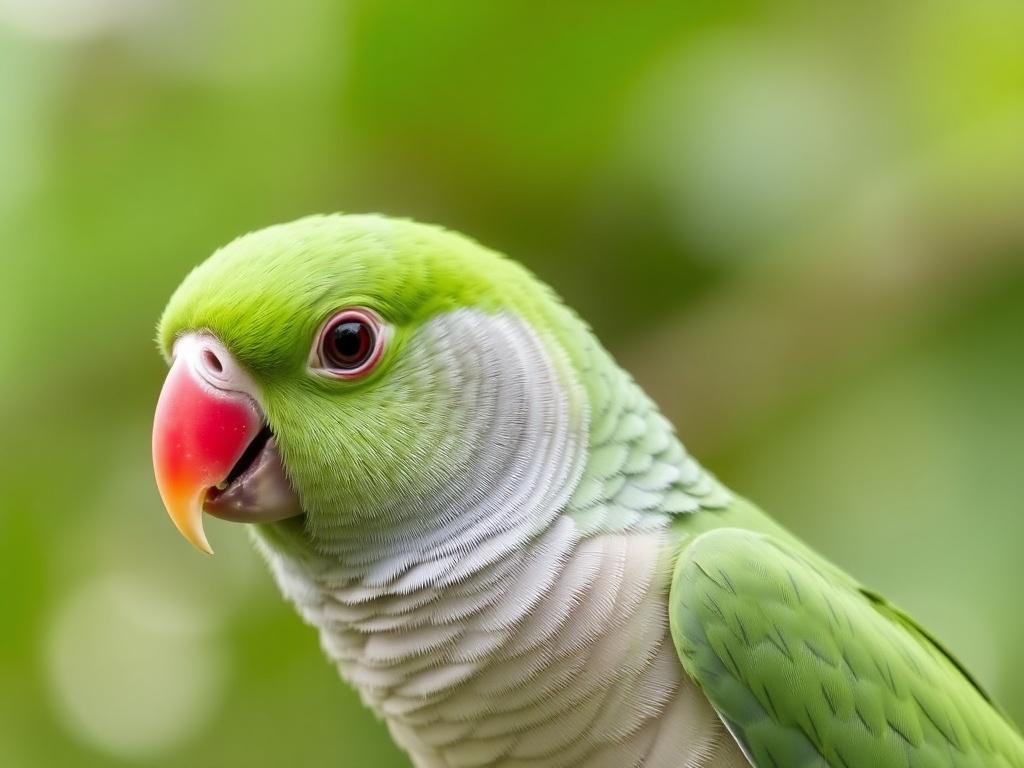Содержание
- Why this topic matters
- What are papillomas?
- What are internal tumors?
- How papillomas differ from internal tumors
- Recognizing tumors in parrots: the subtle signs
- Diagnosing papillomas and internal tumors
- Treatment options for papillomas in parrots
- Treatment options for internal tumors in parrots
- Prevention and minimizing risk
- How to prepare for a vet visit about tumors
- Costs and logistics: what to expect
- Home care and recovery after treatment
- Long-term monitoring and follow-up
- When a pet parent faces hard decisions
- Emerging research and what’s on the horizon
- Realistic case example: seeing the signs and acting
- Practical checklist for owners
- Frequently asked questions (short answers)
- Resources and support
- Final thoughts before the conclusion
- Conclusion
SQLITE NOT INSTALLED
Parrots are charismatic, vocal, and remarkably intelligent companions. When they’re healthy, they fill a home with color and personality. When something goes wrong, though, the worry can feel overwhelming — especially if the problem is a growth you can see or a hidden tumor you can’t. This article walks you through papillomas and internal tumors in parrots in a calm, practical way. Whether you’re a new parrot owner or you’ve shared life with birds for years, you’ll find clear explanations, red flags to watch for, and practical steps for working with your avian veterinarian. I’ll also point out what’s known, what remains uncertain, and how to care for a parrot living with a tumor.
Why this topic matters
There are few things more unsettling than spotting a lump on your bird or noticing a slow change in behavior or appetite. Parrots hide illness well; they evolved that way so weak animals would not attract predators. That stealth makes early detection of papillomas and internal tumors tricky but vital. Papillomas and internal tumors in parrots can range from benign bumps that cause little trouble to malignant tumors that threaten life. Knowing the differences, likely causes, diagnostic steps, and treatment options helps you act quickly and communicate effectively with your vet. The more you know, the better you can support your parrot and make informed decisions.
What are papillomas?
Papillomas are benign growths that arise from the skin or mucous membranes. They are often wart-like and can appear on the beak, face, oral cavity, feet, or even the cloaca of birds. In parrots, papillomas are most commonly associated with viral infections — particularly avian papillomaviruses — but other triggers exist. Papillomas in parrots may appear as single raised nodules or as clusters of coalescing lesions that look rough or cauliflower-like.
These growths are typically noninvasive, meaning they don’t infiltrate deep tissues the way some cancers do. However, location matters: a papilloma in the mouth can interfere with eating and preening, while one on the leg or foot can cause discomfort or infection. Owners often first notice papillomas because they change the bird’s grooming behavior, eating, or vocalizations.
How papillomas form
Papillomas in parrots often originate when a papillomavirus infects epithelial cells — the cells that line skin and mucous surfaces. The virus can stimulate increased cell growth, producing that characteristic wart-like bump. Transmission can occur through contact with infected birds, contaminated surfaces, or perhaps via small breaks in the skin. Not every exposed bird develops papillomas; immune status, age, and other environmental factors influence susceptibility.
Signs that a parrot might have papillomas
– Visible wart-like bumps on the beak, face, or mouth
– Changes in preening, difficulty manipulating food, or dropping food while eating
– Bad breath or drooling if the mouth is affected
– Swelling or crusting around a lesion
– Secondary infections (redness, pus) near a lesion
– Scuffling, limping, or favoring a foot if a lesion is painful there
What are internal tumors?
Internal tumors in parrots are abnormal growths that develop inside the body — in organs like the liver, kidneys, spleen, lungs, or reproductive tract. Unlike papillomas, these tumors are not visible from the outside and typically require imaging, biopsy, or necropsy to diagnose. Internal tumors can be benign (noncancerous) or malignant (cancerous). Malignant tumors are sometimes called neoplasia or cancers and may spread to other tissues (metastasize).
Internal tumors are less common than skin growths but carry a higher risk because they can disrupt organ function, go unnoticed for a long time, and be harder to treat. Many of the signs are subtle, gradual, and easy to attribute to aging if you don’t maintain regular veterinary checkups.
Common types and locations
– Liver tumors (hepatic neoplasms)
– Kidney tumors (renal neoplasms)
– Spleen and lymphoid tumors (may present with systemic signs)
– Lung or air sac tumors (rare but serious)
– Reproductive tract tumors (ovarian or testicular tumors, which may affect hormonal behavior)
Why internal tumors develop
The precise causes often remain unknown. Risk factors include age, chronic inflammation, genetic predisposition, environmental carcinogens, viral infections, and viral-induced changes in immune surveillance. Some tumors are linked to infectious agents in other species (for example, certain viruses cause cancers in mammals), and research continues into similar links in birds.
How papillomas differ from internal tumors
Understanding the key differences is useful because it shapes how both conditions are diagnosed and managed.
| Feature | Papillomas | Internal Tumors |
|---|---|---|
| Visibility | Often visible as skin or mucous membrane lesions | Hidden inside body; not visible externally |
| Common cause | Often viral (papillomavirus) or local irritation | Varied causes: idiopathic, neoplastic, infectious links |
| Symptoms | Local effects (feeding, grooming), possible secondary infections | Systemic signs (weight loss, lethargy), organ-specific signs |
| Diagnosis | Physical exam, biopsy, histopathology | Imaging (X-ray, ultrasound), blood tests, biopsy when possible |
| Treatment | Remove lesion, manage infection, supportive care | Surgery, medical therapy, palliative care depending on stage |
Recognizing tumors in parrots: the subtle signs
Parrots are masters of disguise when it comes to illness. Signs of internal tumors in parrots may be slow to appear and non-specific, so it’s essential to watch for subtle changes. Keep in mind that many conditions can cause similar symptoms; only a vet can determine whether a tumor is present.
Common symptoms to watch for
- Gradual weight loss despite normal eating or a change in appetite
- Increased sleeping or decreased activity levels
- Changes in breathing (labored, noisy, or faster than usual)
- Changes in droppings — frequency, color, consistency
- Swelling in the body cavity (may be hard to detect without handling)
- Reluctance to fly, climb, or exercise
- Feather picking, poor feather quality, or decreased grooming
- Changes in vocalization or behavior (aggression, dullness)
If you notice several of these signs, especially in combination or progression over weeks, it’s time to consult your avian veterinarian.
Diagnosing papillomas and internal tumors
Accurate diagnosis begins with a careful, methodical approach. A qualified avian veterinarian will combine owner history, physical exam, imaging, laboratory testing, and sometimes tissue sampling.
Initial veterinary exam
Your vet will take a full history: onset of symptoms, changes in diet, environmental changes, exposure to other birds, and prior illnesses. During the physical exam they’ll palpate the bird’s body, examine the skin and mucous membranes, assess breathing, and evaluate the bird’s overall condition. Visible papillomas may be assessed visually and palpated.
Laboratory tests
– Complete blood count (CBC) and biochemistry profile: to assess organ function and look for signs of infection or systemic disease
– Fecal tests: to rule out parasites that can cause weight loss or poor condition
– Specific viral tests: when available, testing for potential viral causes may be informative
Imaging
– Radiography (X-rays): useful for detecting masses, abnormal organ size, or fluid in the body cavity
– Ultrasound: helpful for visualizing soft-tissue organs (liver, kidneys, spleen) and guiding fine-needle aspirates
– Advanced imaging (CT, MRI): available in some specialty centers and useful for detailed assessment of tumors or surgical planning
Tissue diagnosis
When possible, obtaining tissue is the gold standard. Biopsy provides histopathology to determine whether a growth is benign or malignant and its cell type.
– Fine-needle aspirate (FNA): a minimally invasive way to collect cells from a mass; may yield a diagnosis in some cases
– Excisional biopsy: removal of a lesion for diagnosis and potential cure if benign
– Incisional biopsy: removing a piece of a larger mass for analysis
For papillomas, a small biopsy can confirm viral papilloma and exclude other skin tumors. For internal tumors, biopsy results guide treatment decisions and prognosis.
Treatment options for papillomas in parrots
Treatment for papillomas depends on location, size, number of lesions, and the bird’s overall health. In many cases, treating papillomas aims to remove the lesion or control its effects — particularly when a growth interferes with eating, breathing, or normal behavior.
Surgical removal
Surgery is commonly used for accessible papillomas. Small lesions can often be removed under general anesthesia by an experienced avian surgeon. Advantages include immediate removal and ability to submit tissue for histopathology. Risks include anesthesia and potential recurrence.
Cryotherapy and other local treatments
Cryotherapy (freezing the lesion) can be appropriate for superficial lesions. Other localized treatments include topical therapies or cautery in select cases. Success varies, and recurrence is possible.
Medical management and supportive care
If a papilloma is not causing major problems, your vet may recommend monitoring and supportive care: ensuring the parrot eats well, keeps hydrated, and receives appropriate treatment for any secondary infections. Antiviral drugs are rarely used and often are of limited proven benefit in birds.
Managing secondary infections
Open or chronically irritated papillomas can develop bacterial infections. Your vet may prescribe topical or systemic antibiotics and advise on wound care, cleaning, and cage hygiene.
Treatment options for internal tumors in parrots
Internal tumors present greater challenges. Treatment choice depends on tumor type, location, size, whether it has spread, and the bird’s overall health.
Surgery
When a tumor is localized and accessible, surgical removal can be curative. However, avian surgeries on internal organs are complex, require an experienced surgeon, and carry anesthesia risks. Recovery and monitoring are intensive.
Medical therapy
– Chemotherapy: Rarely used in avian medicine due to limited data, species sensitivity, and challenges in dosing; some oncology centers may offer tailored protocols
– Hormonal therapy: In cases of hormone-responsive tumors (e.g., some reproductive tumors), hormone-suppressing therapies may help
– Targeted therapy: In human medicine, targeted drugs attack specific cancer pathways; such therapies are mostly experimental or unavailable for parrots
Palliative care
If curative treatment is not feasible, palliative measures improve quality of life: pain control, nutritional support, fluid therapy, and management of complications like infections or organ dysfunction. Quality of life is the primary focus here.
Prognosis
Prognosis varies enormously. Small, benign papillomas often do well after removal. Internal malignant tumors often carry a guarded to poor prognosis, but individual outcomes vary. Honest conversations with your vet about goals (curative vs. palliative), likely outcomes, and costs are important.
Prevention and minimizing risk

Not all tumors are preventable. Still, you can reduce risk and improve early detection with good husbandry and attention.
Practical prevention strategies
- Maintain a balanced, species-appropriate diet rich in vitamins and antioxidants to support immune health.
- Provide a clean environment: regular cage cleaning reduces infectious exposure.
- Limit exposure to smoke, household chemicals, and other potential carcinogens.
- Quarantine and screen new birds before introducing them to a flock to reduce transmission of infectious agents.
- Schedule regular wellness exams with an avian vet for early detection of subtle problems.
Unlike in some mammals, there are limited vaccine options for preventing papillomavirus-associated disease in birds. Controlling spread mostly relies on biosecurity, hygiene, and isolation of affected birds.
How to prepare for a vet visit about tumors
Being prepared helps you and your vet use your appointment efficiently and increases the chance of a timely diagnosis.
Bring useful information
– A timeline of when you first noticed changes
– Photos of external lesions and photos of the bird’s normal condition if available
– Description of diet, supplements, and any recent changes in the environment
– Notes on behavior changes, droppings, appetite, and activity
Questions to ask your vet
- What tests do you recommend to diagnose this growth or problem?
- Do you suspect a papilloma, an internal tumor, or something else?
- What are the risks and benefits of biopsy or surgery for my bird?
- What are the possible diagnoses and prognosis?
- What supportive care can help my bird immediately?
These questions guide a productive conversation and help you weigh options.
Costs and logistics: what to expect
One of the realities of veterinary oncology is cost. Diagnostic imaging, anesthesia, surgery, and histopathology add up. Knowing approximate costs and planning ahead prevents surprises.
Typical cost components
– Physical exam and basic bloodwork
– Imaging (X-rays, ultrasound; CT/MRI if needed)
– Anesthesia and surgery fees if a biopsy or removal is performed
– Laboratory fees for histopathology and specialty testing
– Hospitalization, medications, and follow-up visits
Prices vary by region and clinic. Some specialty centers can provide estimates after an initial exam. Discussing finances and treatment goals with your vet helps determine realistic approaches.
Home care and recovery after treatment
Whether your parrot undergoes removal of a papilloma or surgery for an internal mass, careful home care supports recovery.
Post-surgical care tips
– Follow medication instructions exactly (antibiotics, pain relief).
– Monitor incision sites for signs of infection or dehiscence (opening).
– Keep the environment calm to reduce stress and encourage healing.
– Offer tempting, nutrient-dense foods to ensure proper intake.
– Watch droppings and behavior closely and report concerns promptly.
If your bird has stitches or a wound, keep baths and baths-like activities limited as advised by your vet. Some owners use protective collars or temporary housing changes to prevent self-trauma.
Long-term monitoring and follow-up
Tumors can recur. Regular follow-up exams let your vet detect recurrence early and manage complications.
Follow-up schedule ideas
– Recheck exam 1–2 weeks post-procedure (for wound check and general assessment)
– Bloodwork or imaging at intervals recommended by your vet (often 1–3 months initially, then every 6–12 months depending on the diagnosis)
– Ongoing monitoring at home for appetite, activity, and droppings
Keep a log of changes so subtle trends are easier to recognize over time.
When a pet parent faces hard decisions

Decisions around aggressive treatment versus palliative care are deeply personal and often emotional. Consider the bird’s age, quality of life, potential for pain or stress from treatments, and your capacity to provide care. Seek advice from your avian vet and, if available, an avian oncology consultant. Talk with friends or support groups who have faced similar choices — hearing others’ experiences can make the path clearer.
Questions to guide decision-making
– Will the treatment likely cure the bird or only prolong life briefly?
– What pain or side effects will the bird experience during treatment?
– How much aftercare and monitoring will be required?
– Can I provide the financial and emotional resources for the recommended care?
– What does my bird enjoy, and how will the treatment affect their daily life?
These reflections help align decisions with the bird’s best interest and your values.
Emerging research and what’s on the horizon
Avian medicine continues to advance. Research into viral causes of tumors, more refined surgical techniques, and better imaging tools is ongoing. Although chemotherapy and targeted therapies for birds remain limited, specialty veterinary centers are increasingly offering novel treatments and individualized plans. As research clarifies links between viruses and avian tumors, preventive strategies and diagnostics will likely improve.
How owners can stay informed
– Follow reputable avian veterinary organizations and journals for developments.
– Work with an avian veterinarian who engages with continuing education.
– Join parrot owner communities that focus on evidence-based care and share resources vetted by professionals.
Staying informed helps you advocate effectively for your parrot’s care.
Realistic case example: seeing the signs and acting
Imagine a middle-aged cockatiel whose keen-eyed owner notices subtle weight loss and a decline in vocal activity over two months. The bird still eats but less eagerly and spends more time ruffled and quiet. The owner schedules an avian vet visit. The vet finds the bird thin, hears mild crackles in the lungs on auscultation, and recommends bloodwork and radiographs. X-rays reveal an abnormal mass near the air sacs. An ultrasound-guided fine-needle aspirate gives unclear results, and the bird’s owners opt for exploratory surgery. The mass is removed and submitted for histopathology; the diagnosis is a primary lung tumor. The pathology suggests the tumor is locally aggressive but not widely metastatic. The bird recovers from surgery and, with attentive nursing and follow-up, enjoys several comfortable months. The owners monitor closely and maintain quality of life. This example highlights the value of early attention to subtle signs, collaboration with a veterinarian, and realistic planning.
Practical checklist for owners
- Note any new lumps, behaviors, or changes in appetite or droppings.
- Keep a record of observations with dates and photos if possible.
- Schedule regular wellness exams with an avian vet.
- Prioritize a nutrient-rich diet and minimize toxins in the environment.
- Ask your vet about appropriate diagnostic options early rather than waiting.
- Discuss realistic goals and potential outcomes before major procedures.
- Prepare for post-procedure care: safe housing, medications, and follow-up plans.
- Seek support from trusted friends or parrot care communities during difficult decisions.
Frequently asked questions (short answers)
Can papillomas in parrots be contagious?
Yes, papillomaviruses can spread between birds via direct contact or contaminated surfaces, so isolating affected birds and practicing good hygiene reduces risk.
Do all tumors mean a death sentence?
No. Many growths are benign and manageable. Some internal tumors can be treated successfully, while others may be managed to maximize comfort. Prognosis depends on type, location, and early detection.
Is chemotherapy available for parrots?
Chemotherapy is rarely used and not widely standardized in parrots. Some specialty centers may offer tailored protocols; risks and benefits must be weighed carefully.
What are the signs I should see a vet immediately?
Rapid breathing, collapse, severe bleeding, inability to eat or drink, sudden severe lethargy, or a rapidly growing mass warrant urgent veterinary attention.
Resources and support
If your bird is diagnosed with a papilloma or internal tumor, these resources can help:
– Your local avian veterinarian or a specialty avian hospital
– Online forums and local parrot clubs with experienced owners (use reputable, evidence-based groups)
– Avian veterinary professional organizations and journals for current research and referral centers
Always vet online advice with your avian veterinarian before making decisions about treatment.
Final thoughts before the conclusion

Caring for a parrot with a papilloma or an internal tumor can be emotionally taxing and technically complex. But being informed, observant, and proactive gives you the best chance of identifying problems early and working with your veterinarian to find the right path forward. Small daily observations — a slight change in droppings, a new lump, or a subtle decline in energy — can make all the difference. The goal is to keep your parrot comfortable, pain-free, and as engaged with life as possible. With compassionate care, many birds maintain a meaningful quality of life even after a tumor diagnosis.
Conclusion
Papillomas and internal tumors in parrots present different challenges — visible, often manageable skin growths on one hand, and hidden, sometimes life-limiting internal neoplasms on the other — but both require attentive care, timely veterinary evaluation, and thoughtful decision-making; by recognizing subtle signs, keeping regular veterinary appointments, maintaining good husbandry, and working closely with an avian vet, you can provide the best possible support and improve outcomes for your feathered companion.





